
Unveiling the Onyx Gemstone: Insights into Its Meaning, Healing Properties, and Practical Uses
The onyx gemstone, with its deep black appeal and strength, has fascinated humanity for ages. Here, we’ll unearth the qualities that make onyx unique, explore its cultural and historical significance, and explain how it’s used today in aesthetics and wellness practices.
Key Takeaways
-
Onyx is a durable gemstone, available in various colours and patterns beyond the classic black with white bands, primarily composed of silica and formed in volcanic regions.
-
Historically, onyx symbolizes balance and protection; it is revered across cultures for its ability to convert negative energy into positive energy and for its grounding and protective qualities.
-
The stone is believed to possess physical, emotional, and spiritual healing properties, such as aiding recovery from illness, promoting emotional stability, and enhancing spiritual growth.
Discovering the Onyx Gemstone
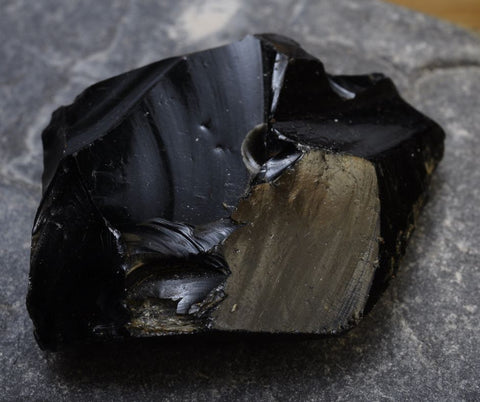
Among the treasure trove of gemstones, the black onyx gemstone holds a unique charm. Known for its hardness and durability, this variety of chalcedony is often black with white bands. Its robust structure helps avoid chipping and sustains physical damage, making it an ideal choice for jewelry.
The deep black colour of the black onyx stone is attributed to carbon impurities within the stone, while the bands are formed due to the parallel banded structure of the silicate mineral.
Origin and Formation
The captivating beauty of onyx carries within it a tale of its birth. Onyx is formed from the deposition of silica in the cavities of volcanic rocks, which originates from the depths of the earth. This process creates the unique and beautiful patterns found in onyx. This process occurs predominantly in volcanic regions, resulting in a gemstone primarily composed of silica. The stone’s formation process, coupled with its natural hardness, renders it a perfect canvas for nature’s artistry.
Onyx is commonly mined in countries such as India, Brazil, Madagascar, the United States, and Russia, where its rich, dark colours and parallel bands come to life.
Types of Onyx
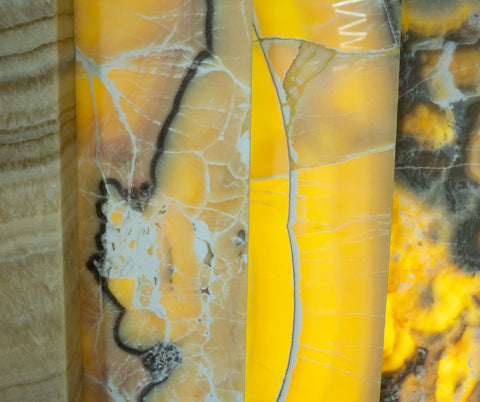
Despite its commonly known black and white banding, onyx comes in a variety of types, each with unique colours and patterns. Sardonyx, for instance, features a brown base with red shades in colour bands, offering an affordable and commonly available variant of onyx. Cornelian onyx, or carnelian onyx, is characterized by its striking red base and alternating red and white bands.
Niccolo onyx presents a thin upper layer, revealing the black base below as gray or blue. Blue onyx is often dyed to achieve its colour and may include white stripes in banded varieties. These unique types of onyx attest to the stone’s rich diversity and its ability to captivate the senses in many different forms.
The Symbolism of Onyx
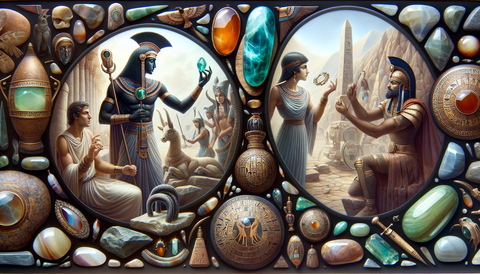
The symbolism and mystique surrounding the onyx gemstone are just as captivating as its physical attributes. Throughout history, onyx has been a beacon of balance, turning negative energy into positive. It is distinguished by its majestic appearance with parallel bands.
Its protective and grounding qualities have been revered in various cultures, with significant roles in ancient Egypt, Greece, and Rome.
Ancient Civilizations
The allure of onyx transcends time, with its roots steeped in ancient civilizations. The Greeks believed onyx was created from the fingernails of the goddess Venus, reinforcing its divine association. The stone’s protective qualities were so revered that Roman soldiers adorned black onyx in their breastplates during battles, believing it would bring success and victory. Its power was thought to repel evil forces, earning it the title of a ‘witch’s stone.’
Cultural Beliefs and Legends
As it travelled through time, the onyx gemstone was imbued with various cultural beliefs and legends. It became renowned as a protective talisman, believed to dispel the energy of evil spirits and shield its wearer from negative influences. However, its reputation was not always positive.
In Arabic culture, black onyx is termed ‘el jaza’, which translates to ‘sadness’, reflecting a more somber cultural interpretation. Regardless of the interpretation, the black onyx meaning remains a potent symbol of protection, healing, and balance within the context of the onyx stone.
Black Onyx Healing Properties and Benefits

The allure of onyx, particularly noted for its healing properties, extends beyond its physical beauty. This gemstone is celebrated for nurturing emotional balance, boosting self-confidence, fostering inner growth, enhancing focus, and providing grounding and spiritual connection.
Black Onyx is believed to possess healing properties that can benefit the mind, body, and spirit. These potent qualities have positioned onyx as a powerful tool for promoting overall well-being, offering a myriad of physical, emotional, and spiritual healing benefits. Among its many virtues, the metaphysical properties of black onyx stand out for their grounding and protective qualities, making it an ideal choice for chakra cleansing, emotional balance, self-confidence, inner growth, meditation, and fostering a deeper spiritual connection.
Physical Healing
Onyx’s potent healing powers extend to the physical realm, with its healing properties believed to aid in:
-
Recovery from illness and surgery
-
Enhancing kidney and liver function
-
Improving blood circulation
-
Boosting physical stamina and endurance
Whether you’re recovering from a health setback or striving to improve your physical well-being, onyx serves as a supportive companion on your journey toward improved health.
Emotional Healing
The healing benefits of onyx include:
-
Offering a sense of stability and peace
-
Assisting individuals in mourning and grieving
-
Helping them to accept and release their emotions without losing themselves.
Moreover, wearing black onyx jewelry, such as a black onyx bracelet or a black onyx ring, is believed to provide calming effects, particularly beneficial for those with sleep issues. With its soothing, healing energy, black onyx serves as a comforting presence in times of emotional turmoil, showcasing its healing properties. So, why not wear black onyx jewelry and experience these benefits for yourself?
Spiritual Healing
On a spiritual level, onyx is associated with grounding, protection, and inner strength. Believed to absorb and transform negative energy, it is thought to offer stability and inner strength. This makes it a valuable stone for promoting well-being and positivity. When used in meditation and rituals, black onyx aids in grounding and strengthening inner spiritual connections, promoting a deeper spiritual experience.
Whether you’re seeking spiritual growth or looking to enhance your meditation practice, the onyx stone serves as a powerful ally.
Practical Uses of Onyx Stones
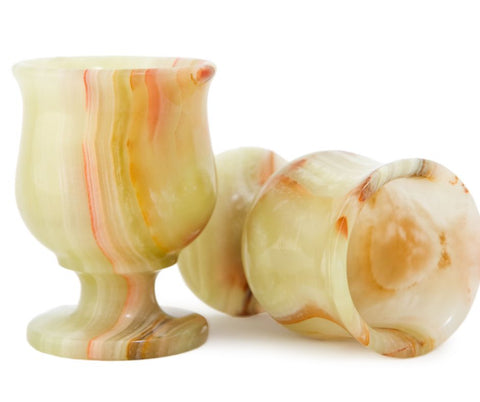
Beyond its healing properties and spiritual significance, onyx stones have a myriad of practical uses. From jewelry to home décor to meditation practices, onyx's versatility allows for its integration into various aspects of daily life.
Black Onyx Jewelry
In the world of jewelry, onyx holds a special place. Its striking appearance and protective qualities make it a popular choice for:
-
rings
-
bracelets
-
pendants
-
earrings
Not only does onyx stone jewelry make a bold fashion statement, but it also offers grounding and stabilizing effects, acting as a shield against negative energies and promoting emotional harmony.
Its durability makes it ideal for daily wear, ensuring you can carry the protective and balancing energy of onyx with you wherever you go. Shop Onyx Jewelry.
Home and Workspace Décor
Onyx’s allure extends to home and workspace décor. With its elegant and sophisticated aesthetic, it can be incorporated into various décor elements like:
-
countertops
-
tabletops
-
conference tables
-
reception desks
Enhancing the appearance of homes and offices.
Its protective qualities foster a peaceful and harmonious environment, making it an ideal component of your living and working spaces.
Meditation and Energy Work

Onyx is a potent tool in meditation and energy work. It enhances focus and grounding, calming the mind and facilitating a deeper spiritual experience.
Whether balancing the root chakra with a black onyx stone or opening the heart chakra with green onyx, the gemstone plays a crucial role in enhancing your spiritual practices.
Caring for Your Onyx Gemstone
Proper care can preserve the beauty and efficacy of your onyx gemstone. From cleaning and maintenance to regular cleansing and charging, the right care practices can ensure your onyx remains a vibrant and potent companion.
Cleaning and Maintenance
Maintaining the lustre and polish of your onyx gemstone requires regular cleaning. Avoid ultrasonic cleaners, ammonia, and soap, as these can cause the gemstone to discolour. Instead, use a soft brush, mild detergent, and warm water to clean the onyx gemstones gently.
Use clear running water and a mild dishwashing liquid for a thorough clean, then dry it with a cotton ball or soft cloth.
Cleansing and Charging
To keep your onyx stone at its energetic best, regular cleansing and charging are vital. Here are some methods you can use:
-
Hold the stone under running water for cleansing.
-
Leave it in the moonlight for a duration of 8 hours to charge it.
-
For a spiritual cleanse, pass a selenite or clear quartz wand over the stone three times.
Regular cleansing ensures that your onyx stone remains vibrant and energetically potent.
Combining Onyx with Other Gemstones
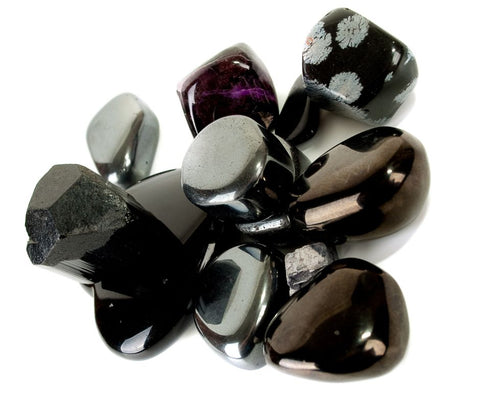
Onyx is a versatile gemstone that can be effectively combined with other stones to enhance its properties. Whether you’re seeking to amplify its grounding effects or boost its protective energy, the right gemstone pairings can unlock new dimensions of onyx’s potential.
Popular Combinations
Among the popular combinations, pairing black onyx with hematite creates a potent mix, enhancing the grounding and protective qualities of both stones. When combined with aventurine, black onyx’s ability to soothe and heal emotions significantly increases.
Moreover, integrating tiger’s eye with black onyx introduces additional energy of courage and resilience, complementing onyx’s already powerful stabilizing effects.
Tips for Choosing Complementary Stones
When selecting stones to complement black onyx, it’s recommended to avoid pairings with brightly coloured or vibrant gemstones as they may interfere with the onyx’s grounding energy. When choosing a complementary stone, consider both the energetic properties and overall aesthetic to ensure compatibility.
Onyx and Zodiac Signs
Onyx's celestial appeal extends to its association with zodiac signs. The gemstone’s protective energy and grounding qualities make it a fitting ally for certain signs, enhancing its inherent strengths and qualities.
Birthstone Significance
Onyx serves as an alternative birthstone for Leos and Capricorns, enhancing their natural qualities. For Leos, onyx is believed to enhance personal strength, self-confidence, and the expression of power. Capricorns, on the other hand, can find onyx stones particularly useful for enhancing their already strong discipline and control.
As a birthstone, onyx is credited with providing both physical and emotional protection to its wearers, reinforcing its appeal among the zodiac.
Astrological Benefits
In the world of astrology, onyx holds a special place. For Leos, onyx is said to bring additional strength, helping to harness their natural leadership skills and self-confidence. Capricorns can find onyx stones useful for enhancing their strong discipline and control. Scorpios can utilize onyx to boost their focus and protect against negativity, which complements their intense and passionate nature. Whether you’re seeking to enhance your natural zodiac qualities or mitigate potential weaknesses, onyx can serve as a potent celestial ally.
Summary
The multifaceted allure of onyx extends from its physical beauty to its potent healing properties, spiritual significance, and practical uses. Whether you’re attracted to its striking appearance, intrigued by its historical and cultural symbolism, drawn to its healing benefits, or captivated by its practical uses, the onyx gemstone offers something for everyone. As we conclude this journey into the realm of onyx, let’s remember that every gemstone carries within it a unique story and energy waiting to be discovered and harnessed. May your journey with Onyx be as captivating as the stone itself.
Frequently Asked Questions
What is the onyx gemstone?
Onyx is a durable variety of chalcedony known for its black colour with white bands. It was formed through silica deposition in volcanic rocks.
What are the different types of onyx?
Onyx comes in various types, such as sardonyx, cornelian onyx, Niccolo onyx, and blue onyx, each presenting unique colours and patterns. This offers a range of options for different preferences in appearance and style.
What are the healing properties of onyx?
Onyx has healing properties that benefit the mind, body, and spirit. It promotes overall well-being and aids in physical recovery, emotional stability, and spiritual grounding.
How can I use Onyx in my daily life?
Onyx can be used in daily life by wearing it as jewelry, incorporating it into your home and workspace décor, or using it in meditation and energy work. It can also be combined with other gemstones to enhance its properties. Try incorporating Onyx into your everyday routine.
How do I care for my onyx gemstone?
To care for your onyx gemstone, regularly clean it with a soft brush, mild detergent, and warm water while avoiding ultrasonic cleaners, ammonia, or soap. Remember to also cleanse and charge the stone regularly for its energetic upkeep.

